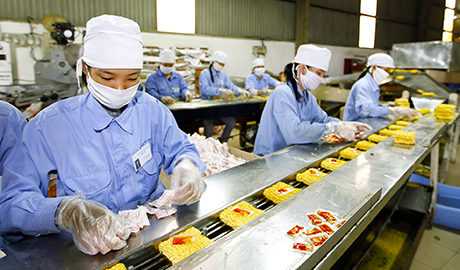
SA Partner is an enterprise with extensive experience in the field of innovation consultancy in the UK. Operating since 1993, until now, the company has affirmed its position and reputation in the world market through providing high quality products and services. The company has built a branch network in many countries such as England, Australia, Ireland and the United States.
Customers in the field of food production and processing are one of SA Partner’s top priorities. Among them, an (unnamed) factory in the UK was instructed to apply the TPM improvement tool and achieved remarkable results.
Challenge
For any business, receiving positive feedback from customers is praiseworthy. However, because the number of orders increased faster than the capacity of the factory, business leaders had to seek the assistance of SA Partner. The goal that the business aims to find solutions to improve short-term productivity, preferably taking advantage of existing resources instead of expanding the factory scale.
SA Partner’s answer
After a period of survey, SA Partner experts saw the potential of improving equipment efficiency and TPM is the right tool to solve the problem of meeting the requirements of the management. factory direct. The methodology used by SA Partner is to improve OEE’s component indicators, which in turn leads to improving overall equipment performance and optimizing productivity.
OEE (overall equipment effectiveness) is an indicator of the performance of one or a group of equipment, made up of three components: Availability (availability), measuring the amount of loss in uptime; Quality (ratio of quality), measurement of quality loss and Performance (efficiency ratio), measurement of loss of operating speed. Limiting or eliminating the above losses can be done through a situation analysis.
For example: Plans for stopping or arranging unplanned shifts are also theoretically a cost. It can operate twenty-four hours a day and seven days a week. However, if there is activity, for example, if there are only two shifts in five days per week, then non-scheduled shifts are usually not considered as losses. Of course, if customer demand goes far beyond the capacity of the machines in these two shifts, it is a waste to work extra shifts. In all cases, if these planned break times are not included, they should still be recognized as potential points that can help improve equipment performance.
(To be Continued)
Productivity and Quality Office